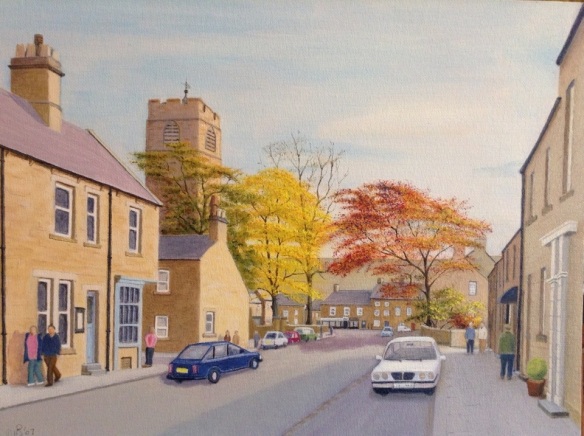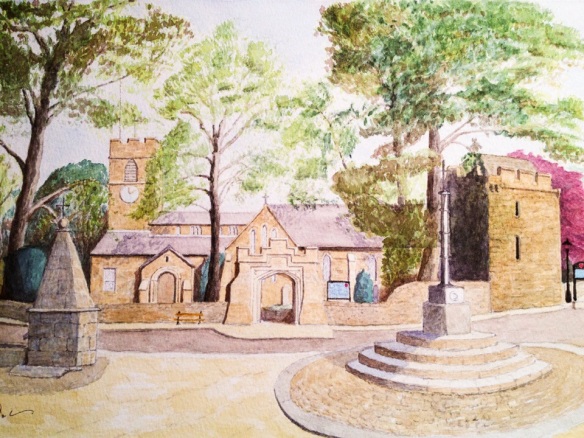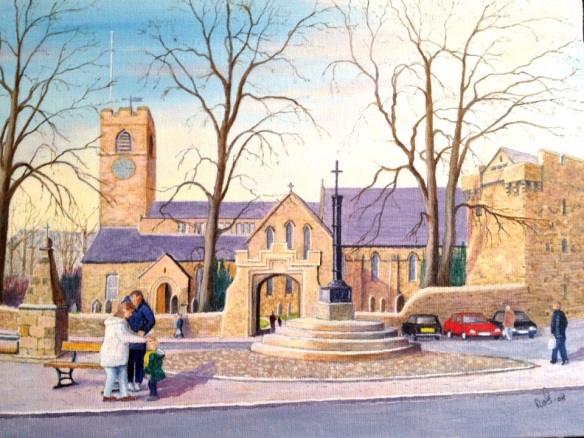Tag Archives: st. andrews church
‘St. Andrew’s Churchyard, Corbridge’ – my watercolour painting, previously in oils from the same photograph. Just finished.
Autumn at St. Andrew’s Churchyard, Corbridge – my oil painting
Autumn at Corbridge

Painted in oils, sweeping up Autumn leaves in St. Andrew’s churchyard, Corbridge, Northumberland. The oldest part of the church originated in 7th Century Saxon times, much of it built out of stone taken from the nearby, then derelict, Roman garrison town.
The Roman presence at Corbridge, then known as Coria, where the Romans built a bridge over the River Tyne, (Coria Bridge – giving the place it’s name) continued for some 300 years until early in the 5th Century.
Corbridge, is at the intersection of Dere Street and Stanegate, the former Roman main roads North/South and East/West. Hadrian’s Wall is approximately 2 miles,to the North.
Market Place, Corbridge
Corbridge Market Place
Corbridge

A watercolour of one of the streets of Corbridge, where I live. In an earlier post I said that Corbridge has Roman origins from AD 70′ when a fort and strategic river crossing of the Tyne, were built and ultimately as a garrison town for more than 300 years.
The base of St. Andrews Church tower (seen in the picture), as part of the original church, was built by German origin Saxons in about AD 600′ from stone readily available from the ruins of the Roman town.
The Roman East/West road, The Stanegate, intersects with the street in the picture, to the right opposite the church tower. The road is still in use, running towards the Roman town site and original bridge, where it joined the North/South road, Dere Street.
Autumn leaves at St. Andrews Churchyard, Corbridge

An oil painting of St. Andrews Church, Corbridge in the autumn. I live in Corbridge, a former Roman garrison town about a mile South of Hadrian’s Wall sited on the then important intersection of two main Roman roads – Dere Street (North – South) and the Stanegate (East – West).
St. Andrews Church originated with the Saxons, in about the year 600 and was substantially added to in Norman times in 13th century when Corbridge was second in size only to Newcastle, in the North East. Now it is a small village on the banks of the river Tyne with about 3000 inhabitants.





